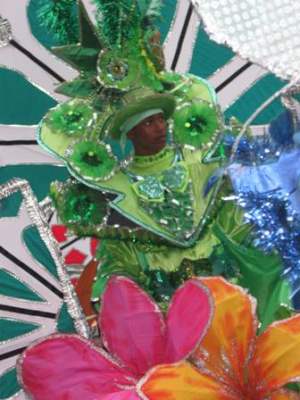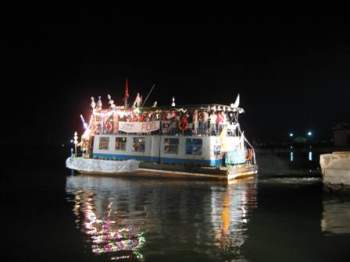Santiago de Cuba’s Proselytizing Carnival
Dariela Aquique

Santiago de Cuba has just concluded its famous annual carnival. These now traditional fiesta in the east of the country — lasting over a period of nine days for twenty-four hours a day — kept people in the streets drinking beer, tasting Creole food, dancing to popular music groups and moving to the rhythms of street bands of drummers.
The spectacular cavalcades of choreographed dance troupes and conga bands and floats pack the streets and avenues – while in the lights of the fireworks, the people of this city looked happy for more than a week. They too celebrated two very specific dates in the middle of this jubilee.
The 25th of July, day of the Santiago Apostle; is the anniversary of the founding of the village back in 1515. The second date celebrated was July 26 (the “Day of National Rebelliousness”), which was declared as a result of the revolutionary actions taken in 1953 when Fidel Castro led an attack on the Moncada Barracks.
In this way the traditional motives and imposed symbols blend to surpass the historical reasons for the festivities, thereby entering the realm of political propaganda.
The carnival is loaded with the proclamation of slogans and revolutionary mottos.

This happens, for example, during the weekend that precedes the festival, when an aquatic carnival is held along the entire coast. It takes place throughout the townships in coastal areas and on the cay located in Santiago Bay.
This year it was done in a new fashion: a parade of boats decked out as “floating floats” were exhibited before the public and a jury of specialists to determine which should be awarded for their design or originality.
What caught my attention was that they didn’t represent districts or cultural groups, but political organizations.
There were floats from the Committee for the Defense of the Revolution (CDR), the Cuban Confederation of Workers (CTC), the Young Communist League (UJC), the Federation of University Students (FEU) and something as extravagant as a “boat float” representing nothing less than the Association of Combatants of the Revolution.

From these crafts were proclaimed tantalizing phrases like:
“Long live the CDR: Watchful, vigilant, and combat crime at the carnival!”
“Combatants of the Revolution, waiting for the 26th!”
“The Santiago Carnival – Defending the accomplishments of the revolution!”
I couldn’t believe what I heard – they were taking advantage of a conjuncture of popular merrymaking to conduct proselytizing work. It all made me recall the vehemence with which religious fundamentalists promote “the word of God” to win over followers or to transform laymen into parishioners.
Our celebration was tinged with things like this, giving it the distinction of being — more than anything else — a proselytizing carnival.






Comments are closed.